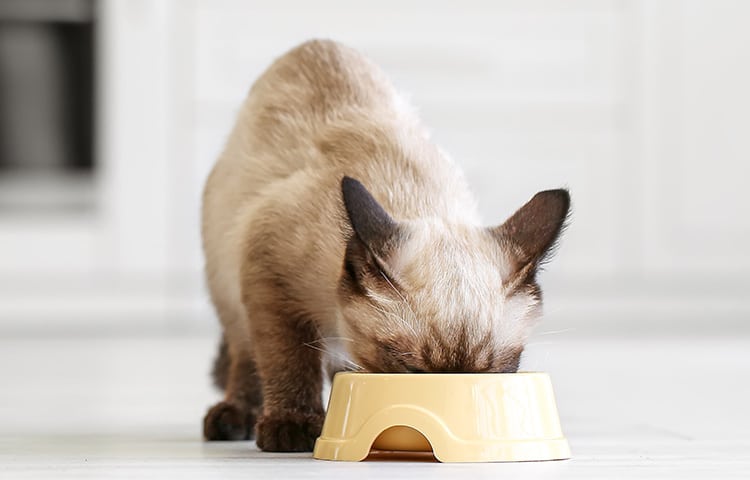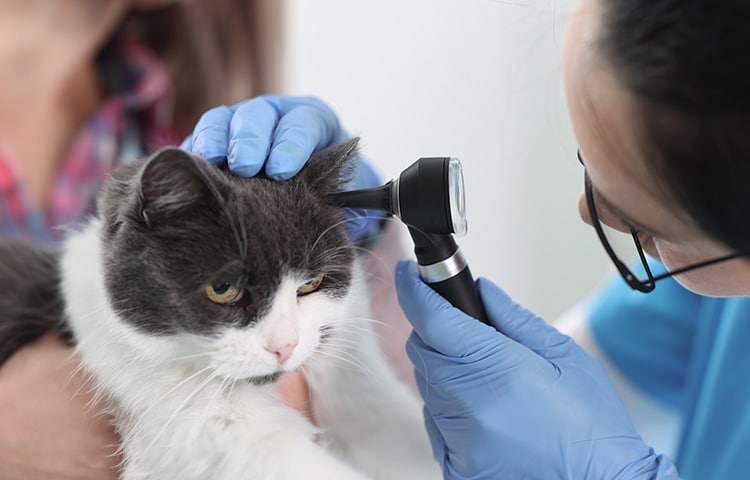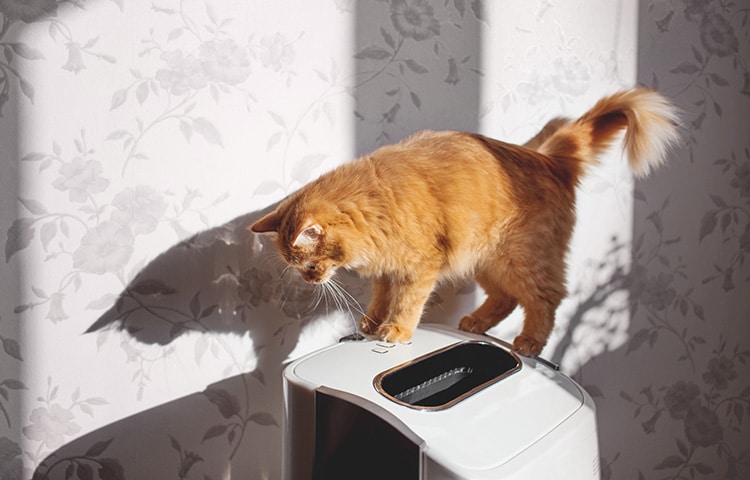Common black cat myths and the truth behind them
Discover the truth behind common black cat myths. Learn why black cats are just as loving as any other pet.
Read morePublished: 2 October 2025
While allergies are often associated with humans (like people who are allergic to cats) it’s important to know that cats themselves can also suffer from allergies.
Allergies in cats can be triggered by environmental factors like pollen or dust, certain foods, flea bites, or even substances they come into contact with. These allergic reactions can lead to symptoms such as itching, sneezing, or digestive issues, making your cat feel miserable.
The good news? Once you understand the causes and symptoms of allergies in cats, you can take steps to manage them. In this guide, we’ll break down everything you need to know to help your cat feel better, including common types of allergies, their symptoms, and treatment options.
Jump to:
Like humans, cats can develop allergies, but the triggers and symptoms are specific to them. Pinpointing the cause of your cat’s allergies is the first step to effective treatment. Below, we talk about the four main types of allergies in cats and what you need to know about each of them.
Environmental allergies, also called atopic dermatitis, occur when cats react to allergens in their surroundings.
Common triggers include:
Cats with environmental allergies might experience worse symptoms during spring or summer due to higher pollen levels, while indoor allergens like dust can cause issues year-round.

Food allergies in cats occur when their immune system reacts to certain proteins in their diet. Unlike environmental allergies, food allergies are not seasonal and can happen anytime, depending on what your cat eats.
Common culprits include:
Symptoms often include itchy skin, especially around the face, neck, and ears, and digestive issues such as vomiting or diarrhoea.
Flea allergies are one of the most common types of allergies for cats. Some cats are hypersensitive to flea saliva, meaning even a single flea bite can trigger a severe reaction.
Symptoms of flea allergies include:
Even indoor cats can develop flea allergies if fleas are brought into the house, so regular flea prevention is crucial.
Although less common, contact allergies happen when cats react to substances they touch.
Potential triggers include:
Contact allergies typically cause redness or rashes in the areas where the cat comes into contact with the allergen.

Allergy symptoms in cats can mimic other health issues, making them tricky to spot. If you notice changes in your cat’s behaviour or appearance, it’s important to pay close attention and speak to your vet.
Key allergy symptoms in cats include:
If you notice these symptoms, consult your vet for a proper diagnosis.

When you suspect your cat has allergies, a vet visit is the first step. Here’s how a vet might diagnose an allergy in your cat:
Once you’ve found the cause of your cat’s allergies, you can work with your vet to create a treatment plan. Managing allergies often requires a combination of treatments and lifestyle changes, which can include:

Managing allergies in cats requires consistent effort, but with the right strategies, you can help your cat live comfortably.
Here’s how to minimise allergens in your home:
Treating your cat’s allergies can be challenging, but with proper care, your feline friend can live a happy, healthy life.
Pet insurance can help cover the cost of allergy-related treatments. Learn more about our cat insurance or get a quote today.